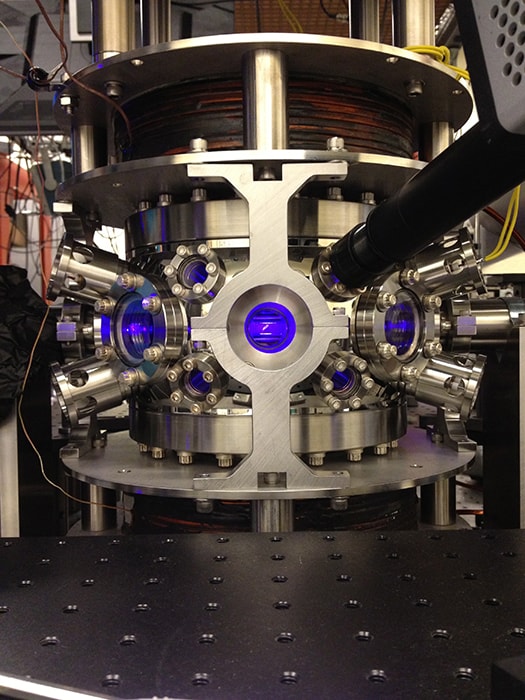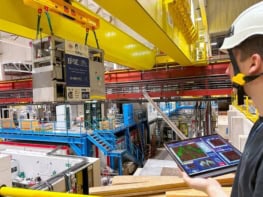
A magneto-optical trap has been used by physicists in the US to study how ions and atoms interact to create hypermetallic alkaline earth oxides – materials that have potential technological applications.
Hypermetallic alkaline earth oxides are linear molecules in which an oxygen atom is sandwiched between two alkaline earth atoms. The properties of these oxides can be finely tuned through the choice of the alkaline earth atoms, creating structures that could prove useful for a wide range of applications including nonlinear optics, materials science or chemical synthesis.
Currently these oxides are made and studied in plasmas and this means that it is difficult to both control the process and to gain insights into how they form.
Quantum control
Now, Prateek Puri and colleagues at the University of California Los Angeles, University of Connecticut and the University of Missouri have come up with a way of making hypermetallic alkaline earth oxides by reacting ions and atoms in a magneto-optical trap. The process involves cooling the reactants to temperatures as low as 5 mK and controlling the reactants’ initial quantum states. As a result they were able to make an extremely precise study of the formation of an alkaline earth-oxide ion comprising barium and calcium (BaOCa+).
The team began by loading barium ions into the magneto-optical trap to create a string of equally spaced ions – dubbed an ion crystal. Then molecular ions comprising barium, oxygen and a methyl group (BaOCH3+) were introduced to the trap. These were cooled through interactions with the ion crystal. Then, a cloud of about three million calcium atoms are reacted with the BaOCH3+ and the desired BaOCa+ appears as new ions in the crystal. Finally, the trap is switched off and all the ions are directed at a mass analyser that determines the make-up of the products of the reaction.
Collision energy
By varying the temperature of the reactants – and therefore the kinetic energy with which they collide – over a temperature range of 5 mK–30 K, Puri and colleagues were able to study the effect that collision energy has on how the reaction occurs. They also used a laser to put the calcium atoms into specific quantum states before the reaction occurred. This allowed them to work out that atoms in certain quantum states are more likely to react than atoms in other states.
The research is described in Science.



